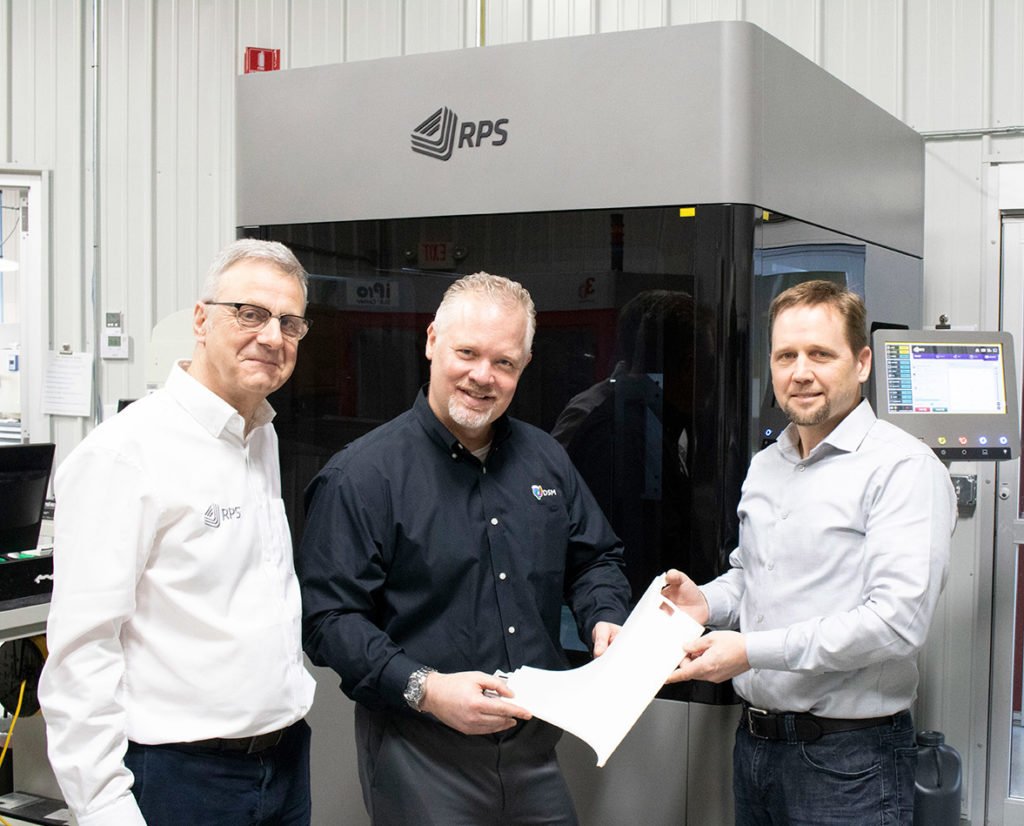British stereolithography system manufacturer RPS has begun introducing its large-scale 3D printer to North America. While the company first introduced us to the NEO800 in 2016, this is its first sale in the U.S. The first customer is Midwest Prototyping, a service bureau based in Wisconsin.
The NEO800 gets its name from its 800 x 800 x 600 mm build envelope, on the large end of vat photopolymerization systems on par in terms of scale with the RSPro800 from UnionTech, Prodways’ MOVINGLight series, the Rapid Meister ATOMm 8000 from CMET, 3D Systems largest machines, and several others. The machine also relies on an open resin system, meaning that it is not limited by the use of proprietary resins. For Midwest Prototyping’s use of the NEO800, Dutch chemical company DSM has been selected as the material provider. Customers could buy and use other resins, however.
Since the system was launched in 2017, the company has made steady progress in expanding its presence. Large customers such as Clarks Shoes acquired one earlier this year for prototyping footwear designs. Meanwhile, RPS has been involved in significant activity in the world of high-performance automobiles. Specifically, Briggs Automotive Company used Malcolm Nicholls Limited to produce parts with the large-scale printer for its BAC Mono R supercar. The Oxford Brookes Racing (OBR) Formula Student racing steam also used the system for its 2019 vehicle.
Given the size of the machine, it makes sense that it would be the tool of choice for service bureaus, which produce large batches of part at once. While one of the industry’s oldest service bureaus, Materialise, uses its massive Mammoth 3D printing systems in-house, smaller or newer businesses have access to larger machines via companies like RPS, which is why service firms such as Ogle Models & Prototypes in the U.K. and One3D in the Czech Republic turned to the NEO800.
As the company extends beyond Europe and into the U.S., it has also continued its partnership with DSM. DSM materials have routinely been selected for use with the NEO800 in the aforementioned projects. In 2019, RPS and DSM formed the TriCollective, a method for companies without the knowledge or capital resources to lease in 3D printing hardware and materials. This is one of many partnerships with smaller firms that DSM has made, which also include Origin and Inkbit.
For its own technology, RPS uses the NEO Material Development Kit, a polymer research and development tool that allows material developers to test new resins for NEO systems using a one liter vat, single layer exposure panes and RPS’s Titanium software. This allows them to determine the necessary exposure time and material formulations before moving on to a larger 13-liter system.
The fact that RPS relies on an open materials approach to its SLA technology is representative of the larger trend away from hardware-specific materials in the industry as a whole. While early stalwarts like 3D Systems and Stratasys have sold their materials directly to customers, the open materials approach allows newer machine manufacturers entry into the marketplace as customers look to them for lower cost feedstock options. In turn, this gives companies like DSM a greater footprint, while expanding the adoption of 3D printing across industries.
While RPS continues to grow, it and every other manufacturer of SLA technology will have to look over their shoulders for competitors working on large-scale, continuous-DLP technology, such as Azul.
